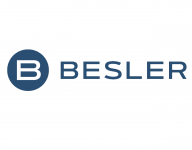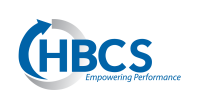As a refresher, under the Post-Acute Transfer Rule (PACT), if a patient was discharged below the Geometric Mean Length of Stay (GMLOS) and the discharge status on the claim indicated a transfer to post-acute care, then the hospital is entitled to a per diem payment amount and not the total amount a full DRG payment would provide. There are currently 278 DRGs impacted by the transfer rule. Nine discharge status codes would result in a transfer versus a DRG and the claim would be paid a per diem amount versus the full DRG.
The 9 codes are:
02 – Acute Care
03 – Skilled Nursing Care
05 – Designated Cancer Hospital
06 – Home health
50 – Outpatient Hospice
51 – Inpatient Hospice
62 – Inpatient Rehab
63 – Long term acute care
65 – Inpatient Medicare Psych
The banket waiver that was put into effect in March due to COVID-19 and the Public Health Emergency (PHE) impacts all areas of healthcare, including care and reimbursement.
Much of the waiver is focused on Patients Over Paperwork which minimizes some of burdens of paperwork to allow for an increase of patient care time. There are certain waivers affectingaccounts that would be impacted by the rule. Many of the stays with patients that have a COVID-19 diagnosis are lengthy and would result in an account being over the GMLOS, and therefore not impacted by the rule.
There are aspects of the waiver that a provider should be aware of when reviewing for the appropriate discharge status codes to indicate either a transfer or discharge:
Acute-care facilities can utilize alternate locations for acute care
This is referenced as hospitals without walls. Patients can be moved to distinct part units for acute care. They can also utilize non-clinical areas to house acute patients. When patients are being moved, this should not be an 02, as the patient is maintaining acute status. If the distinct part is being used for acute care, the patient should not be discharged and transferred. The acute status should remain.
No 3-day qualifying stay for patients to have a covered SNF stay
This was initially done to get COVID patients out of the hospital, but is now done to get non-COVID patients out of the hospital. Waiving the 3-day stay will likely increase the number of patients discharged to skilled care. Providers must ensure the level of care needed is supported by medical necessity.
Required paperwork for home health was minimized
Paperwork was minimized for required certifications and OASIS timeframe for completion. COVID-19 would result in a patient being homebound. Self-quarantining would not count as homebound for Medicare. This will increase the volume of patients that qualify as homebound and will increase the number of accounts impacted by the rule.
LTACs and Inpatient Rehab were not excluded from the waiver
It is easier to be transferred to either of these settings with the waiver in place. For the LTAC, the twenty day stay expectation has been eliminated during the PHE. The rehab hours for admission to inpatient rehab is also eliminated. These two items are likely to increase the number of patients transferred to those settings, causing more accounts to be impacted by the transfer rule.
As you or your vendor perform a retrospective review of accounts impacted by the transfer rule you should be aware of these compliance pitfalls:
- Relying solely on the information in HETS to determine if a patient was transferred
- Not placing calls to post-acute care providers
- Lack of a clinical reviews
- Reviews are too close to the discharge date
- Lack of overpayment reviews
If your retrospective review includes any of the above items, you are at risk for an incorrect discharge status code and being overpaid.
To have a compliant process, you must make calls to post-acute care providers after the utilization is reviewed. HETS utilization is only a piece of the validation process. Clinical resources should be included and the nurse should review the chart for patient needs. This is more important than ever with the waivers due to COVID-19. Patients are at high risk of being transferred unintentionally.
Your process must allow time for post-acute providers to get their bill in to Medicare.
Finally, CMS requires you to report all overpayments. You can’t report them if you are not reviewing for them.
COVID-19 and the blanket waivers in place are designed to give care providers more time for patient care. This initiative was needed, but it leaves room for billing and documentation errors. Ensure your retrospective Transfer DRG review includes all the steps above to have confidence in that claims paid accurately by Medicare.
About the Author:
Mary Devine is Senior Director of Revenue Cycle at BESLER. Her main responsibility is to oversee the Transfer DRG product line. Mary has over 25 years of experience in healthcare financial management and has a wide knowledge of all components within the revenue cycle as well as a strong clinical background. Mary holds a Bachelors in Accounting from The Pennsylvania State University and is an RN.















